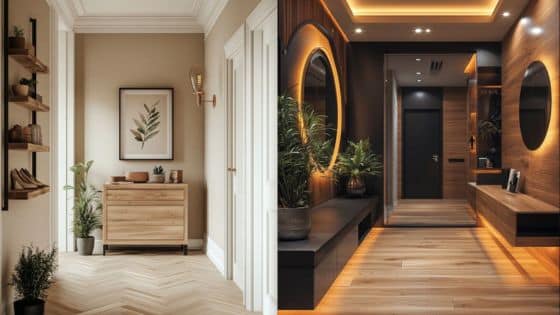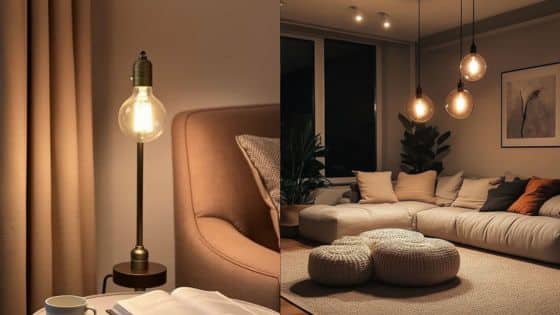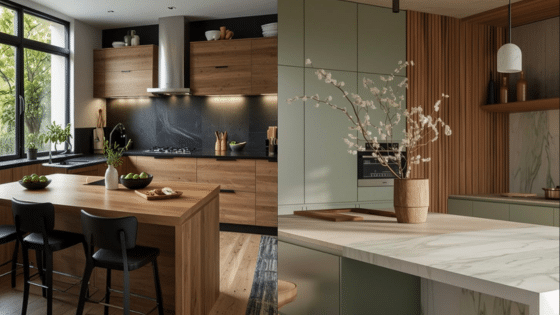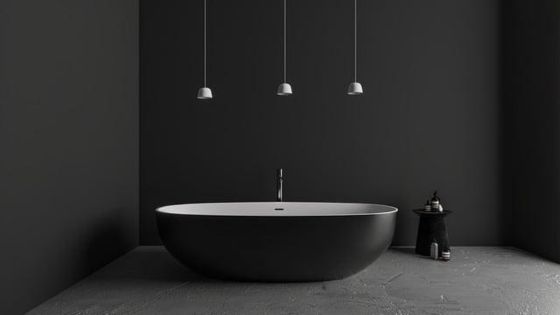Designing a kids room is about more than choosing bright colors and fun themes—it’s about creating a safe, functional, and inspiring environment for your child to grow. A well-designed kids room balances practicality with creativity, ensuring the space meets your child’s needs today and adapts as they get older. Smart choices in layout, furniture, and storage help you create a flexible room that remains organized and welcoming.
Personal touches and creative décor spark imagination and make your child feel at home in their own space. Whether you’re updating a nursery, planning a toddler’s room, or setting up a space for an older child, thoughtful design choices make all the difference.
Key Takeaways
- Practical design creates a safe and adaptable space.
- Smart organization keeps the room functional and tidy.
- Creative elements make the room uniquely yours.
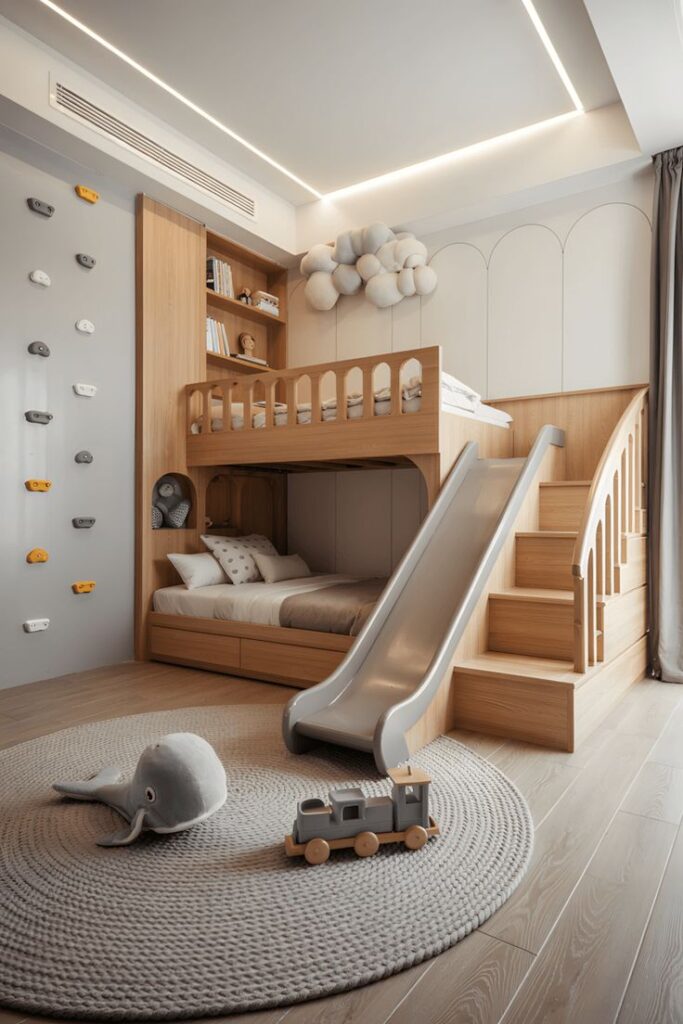
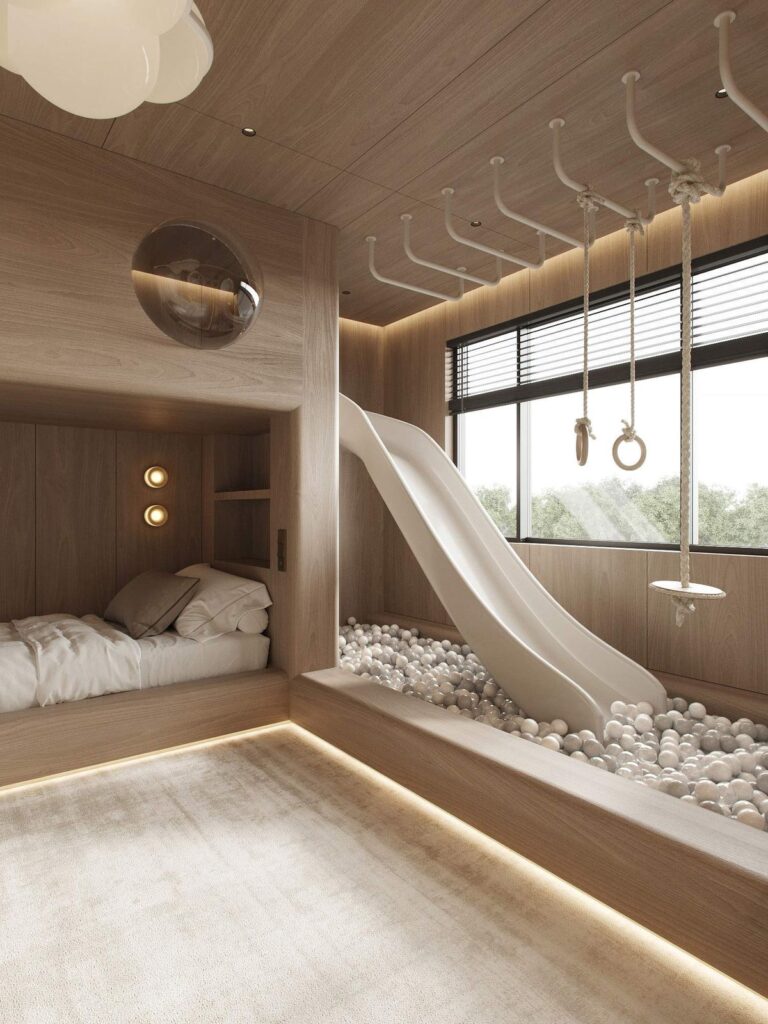
Core Principles of Kids Room Design
Successful kids room design goes beyond appearance, focusing on meeting developmental needs, daily routines, and evolving interests. The right approach helps you create a room that supports creativity, comfort, and safety for your child.
Understanding Kids’ Needs and Personalities
Effective children’s room design begins by considering the unique personality and routines of your child. Pay attention to their favorite colors, hobbies, and how they use their space for play, study, or relaxation. Even younger kids benefit when you include their interests and preferences in the room design process.
You can use a table to identify and address these factors:
| Factor | How to Address in Design |
|---|---|
| Age & Routines | Age-appropriate furniture and zones |
| Personality | Personal decor or art created by your child |
| Interests | Themed bedding, wall art, or play areas |
Involving kids in choices about colors, wall art, or storage helps them feel ownership, resulting in a room they enjoy. This also makes adapting the room to changing tastes simpler as your child grows.
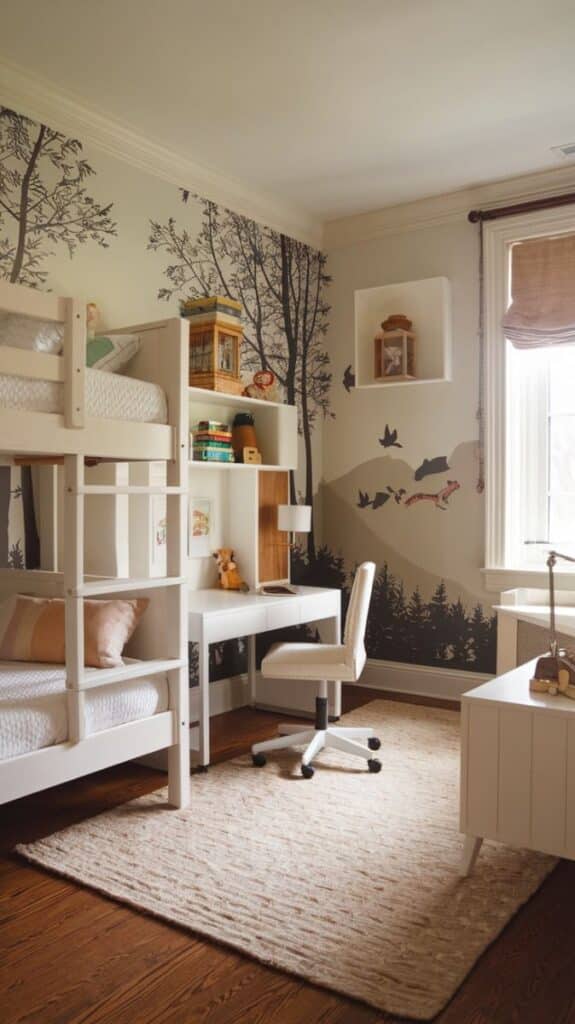
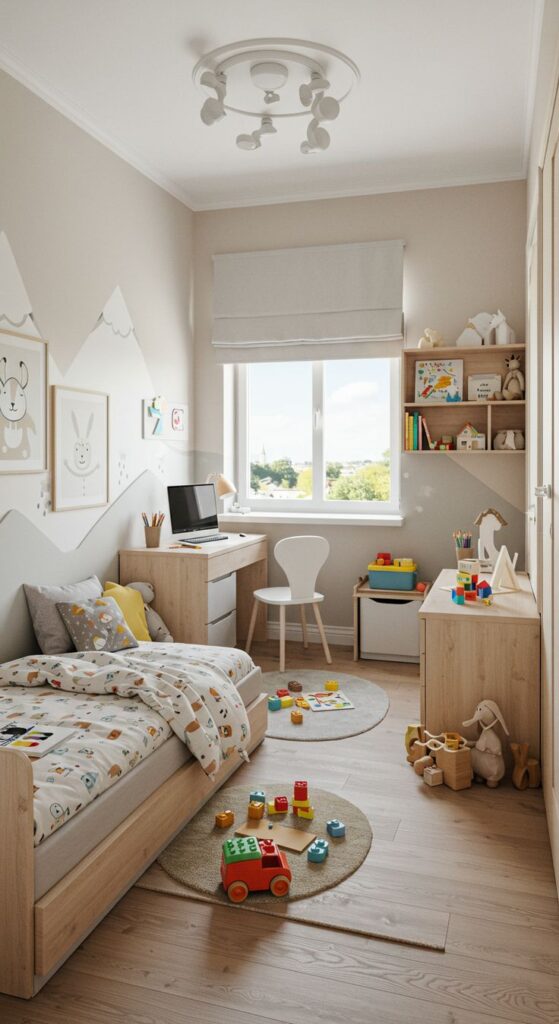
Balancing Fun, Functionality, and Growth
A well-designed kids’ room finds a balance between fun elements and everyday practicality. You can add creative features like a tent for reading or a display shelf for toys and collections. These playful touches make the space inviting.
Functionality remains central to lasting kids room designs. Use versatile storage—bins under beds, open shelving, or modular drawers—to keep the area tidy and adapt as storage needs shift. Choose furniture that serves multiple purposes, such as beds with built-in drawers or desks with adjustable height.
Plan the layout to create different zones for rest, play, and learning. Leave open floor space for movement and allow each area to serve a specific purpose. Furniture, rugs, or room dividers can set these boundaries visually and functionally.
Safety and Durability Considerations
Safety is the foundation of a good kids’ room design. Select furniture with rounded corners, avoid tall or unstable items, and secure heavy pieces to the walls. Opt for non-toxic paints, natural materials, and hypoallergenic fabrics to reduce health risks.
Lighting should be bright but gentle, reducing glare and shadows. Nightlights, blackout curtains, and multiple lighting options help adapt the room from day to night. Install childproof covers for electrical outlets and keep cords out of reach.
Durable materials are critical for active children. Choose finishes and textiles that stand up to spills, rough play, and frequent cleaning. Flooring should be easy to maintain, such as laminate or washable rugs, ensuring the room remains safe and inviting over time.
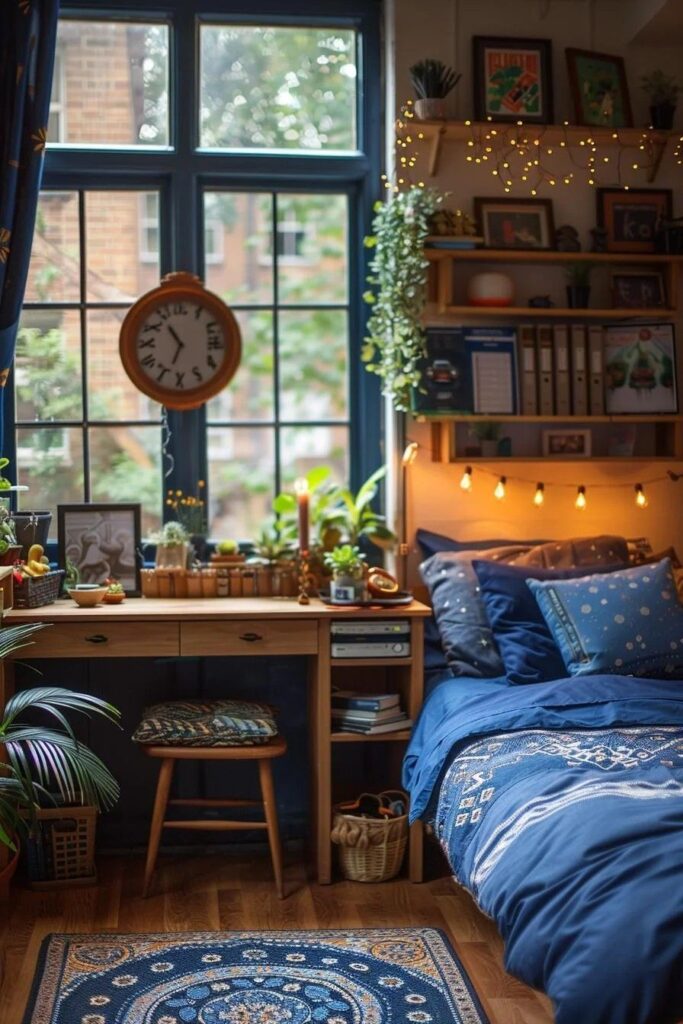
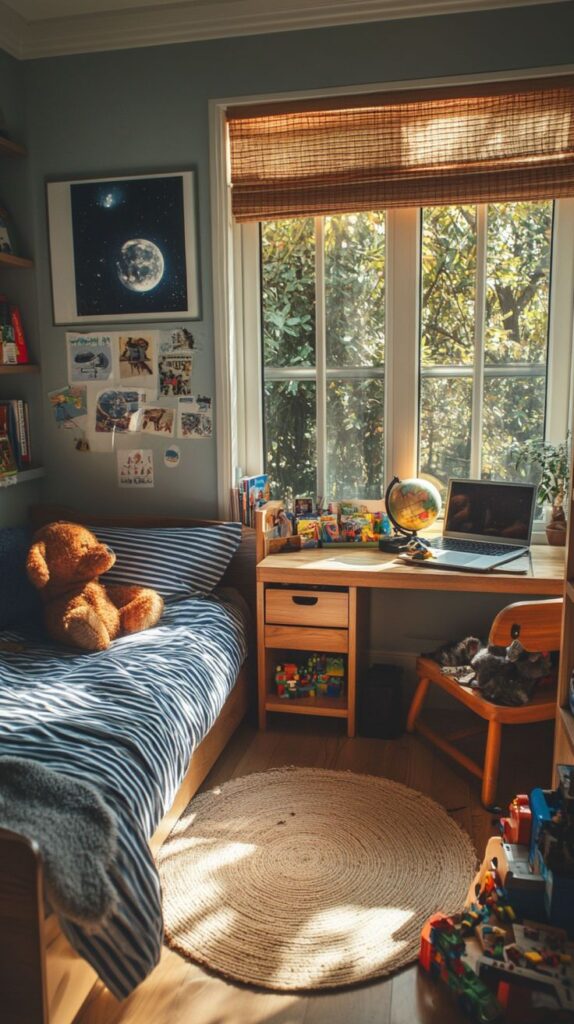
Room Layout and Space Planning
Effective kids room design depends on making the best use of space, choosing furniture that fits both needs and style, and dividing the room for different functions. Consider safety, growth, and flexibility as you decide how to plan and furnish the room.
Choosing the Right Floor Plan
Start by measuring the room and making a simple sketch. Mark out windows, doors, and closets to see where furniture best fits. For small rooms, keep the main walkway clear and use vertical space with loft beds or shelves.
Aim to position beds away from windows for safety and temperature control. Use lower beds for younger children, while older kids enjoy the space-saving benefits of a bunk bed.
Arrange desks near sources of natural light to encourage focus during homework or art projects. Storage pieces like bins, chests, or modular shelves can fit under high beds or against unused walls, helping you keep clutter organized.
Designing Shared Spaces for Siblings
When siblings share a room, privacy and personal space become priorities. Bunk beds or twin beds with a nightstand in between are classic solutions. You may also use a room divider or shelving unit to define each child’s zone.
Color-coded bedding or decor items help personalize each area. Custom closets or individual toy storage bins keep belongings separate and simplify cleanup.
Shared desks or reading nooks can encourage cooperation, but some children may benefit from having separate study or play tables. Allow input from each child on layout to support a sense of ownership and harmony.
Zoning for Multiple Activities
Kids’ rooms often serve as bedrooms, playrooms, and workspaces at once. Divide the room visually into zones: a sleeping area, a study space, and a play zone. Use rugs, lighting, or shelving to mark boundaries.
In smaller rooms, multi-use furniture—like a loft bed with a built-in desk or a storage bench—maximizes utility without crowding. Store toys and books in designated bins or wall-mounted organizers to keep transition between activities simple.
Keep pathways between zones clear to improve safety and comfort. Rotate toys and decorations seasonally to maintain interest and make the most of the available space.
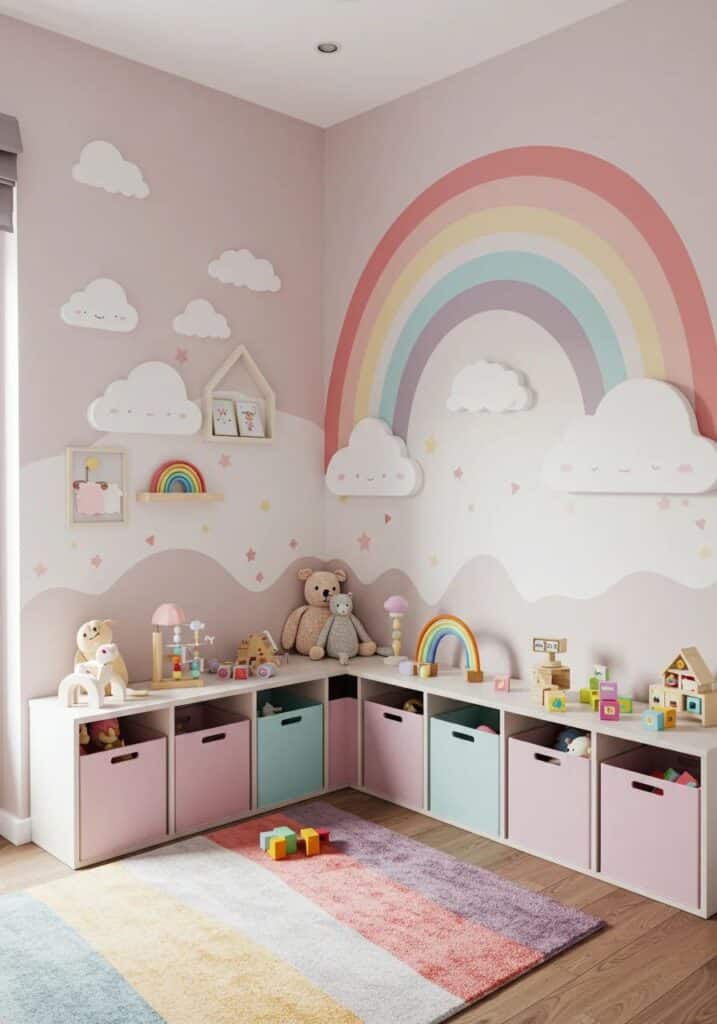
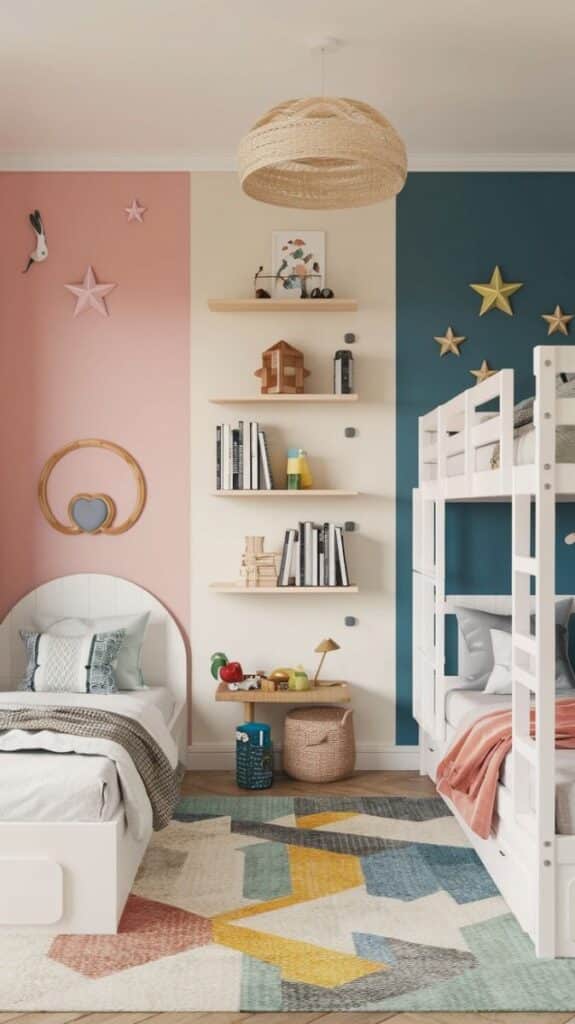
Essential Furniture and Practical Features
Choosing the right furniture and thoughtful features makes your kid’s room both functional and enjoyable. Prioritizing safety, flexibility, and space-saving solutions can help the space grow with your child’s changing needs.
Beds and Sleeping Arrangements
Selecting the best bed is essential for comfort and maximizing space. A standard single bed works well for most children, but bunk beds are especially useful for shared rooms or sleepovers, making the most of limited floor area. Some bunk beds now include built-in storage drawers or trundle options to keep extra bedding or toys out of sight.
Safety is key, so always look for guardrails on bunks and solid frames on any bed style. For younger children, low-profile beds help prevent injury. If space is tight, consider a loft bed. These designs leave room for desks or play areas beneath, creating distinct zones in the same footprint. Choose mattresses that fit securely and offer adequate support for your child’s age and size.
Workspace and Desk Options
A dedicated workspace helps kids develop good study habits and organizational skills. Place a sturdy desk near natural light if possible, with adjustable seating to suit your child’s posture. For small rooms, wall-mounted desks or compact styles slide easily into unused corners.
Look for desks with built-in drawers, shelves, or pegboards to store supplies. Personalize the desk with practical accessories like lamps, pencil holders, and cork boards to keep items tidy yet accessible. If siblings share the room, try a long table or two side-by-side desks to provide individual designated areas. Make sure wiring for devices is safely managed and out of the way to reduce tripping hazards.
Creative Play Zones
Making room for play encourages creativity and keeps toys organized. Dedicate a section of the kids bedroom to a play space, whether it’s a soft rug, a tent, or a corner with modular shelves. For extra fun, some families add slides attached to bunk beds or loft designs, blending play with practicality.
Open shelving or cube storage makes it easy for kids to access and put away toys themselves. Include seating, like beanbags or child-sized chairs, to give kids a place to unwind and read. If space allows, use lightweight room dividers or nooks to separate play zones from sleep and study areas, creating a sense of order and flow.
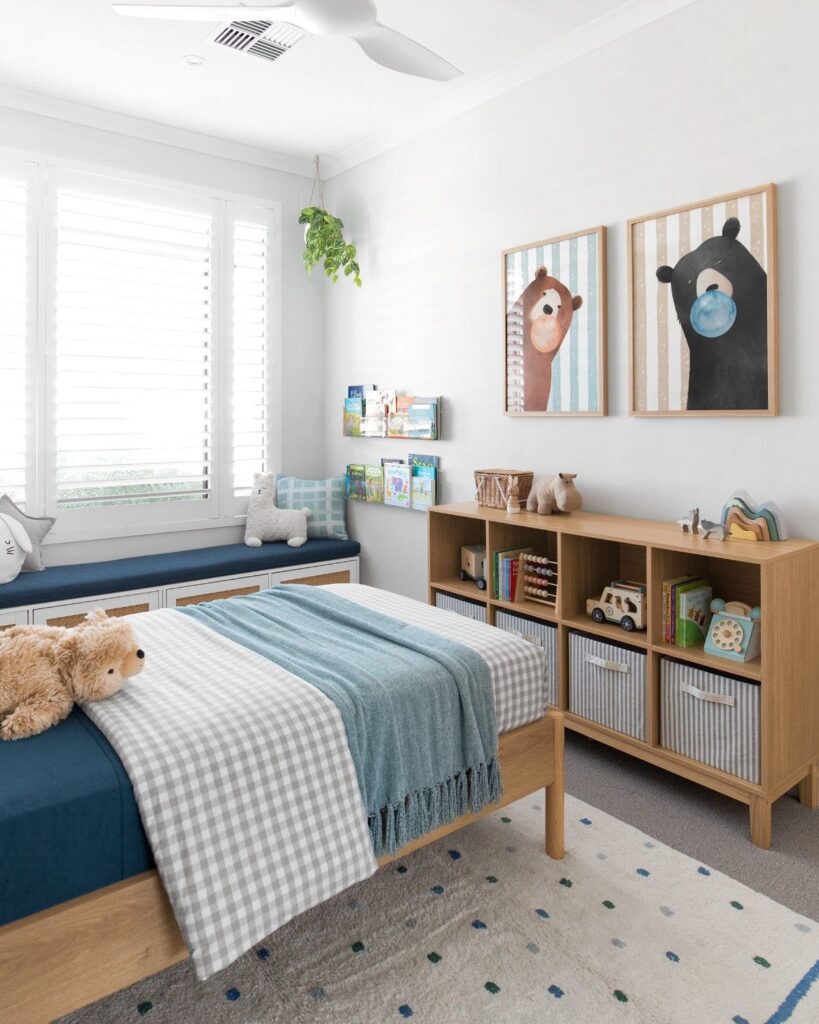
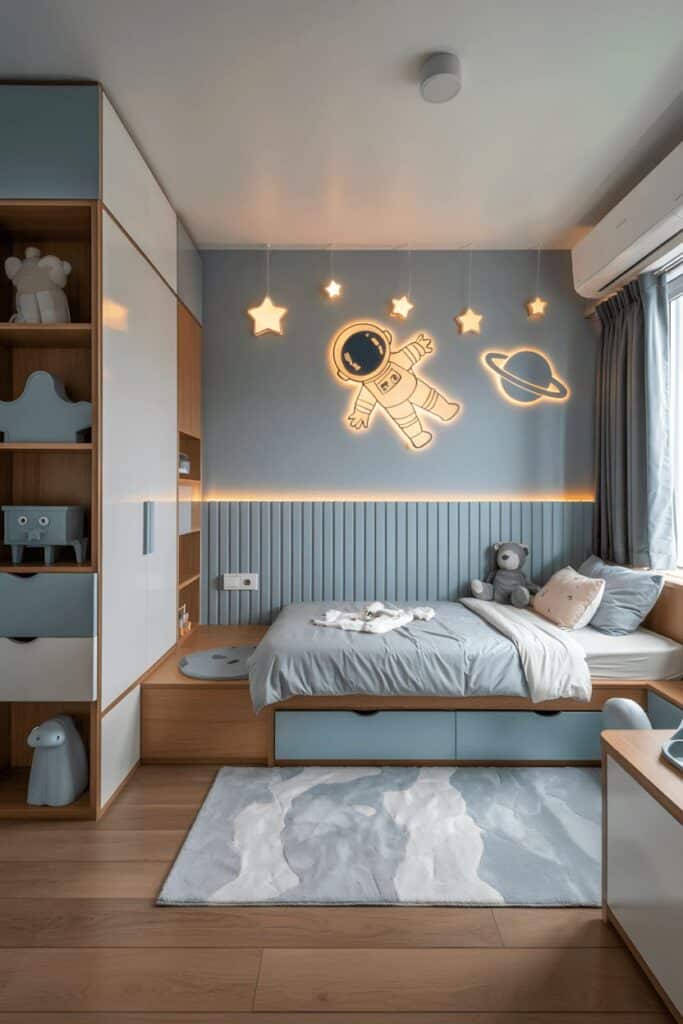
Smart Storage Solutions
To create a clutter-free kids’ room, you need solutions that manage toys, books, and clothes efficiently. Thoughtfully chosen shelves, bins, and baskets not only increase storage but also foster tidiness and autonomy.
Utilizing Shelves and Bookcases
Wall-mounted shelves and bookcases free up floor space, making the room feel larger. Keep everyday items on lower shelves within easy reach and reserve higher shelves for seasonal or less-used items.
Install bookcases to hold books, board games, or display favorite collections. Use adjustable shelving to reconfigure storage as your child grows. Floating shelves can make use of awkward or small wall spaces next to beds or desks.
Table: Shelf Placement Ideas
| Location | Best Use |
|---|---|
| Above Desk | Art supplies, books |
| Near Bed | Nighttime essentials |
| Entry Wall | Baskets for shoes |
Stick with sturdy materials and anchor bookcases securely to prevent tipping. Label shelf sections for quick organization.
Maximizing Storage with Bins and Baskets
Plastic bins and woven baskets offer great flexibility for storing toys, blocks, art materials, and laundry. Place them under beds, inside closets, or on open shelves to keep items accessible yet contained.
Choose clear or labeled bins so your child can see what’s inside. Stackable bins save vertical space and look neat when uniform in size and style. Woven baskets can double as décor elements and soften a room’s look.
List: Where to Use Bins and Baskets
- Inside cubby shelves for shoes and small toys
- Under window seats or beds for bulky items
- On closet shelves for off-season clothes
Rotate toys in and out of bins to keep interest fresh and prevent overcrowding.
Organizing for Independence
Set up storage so your child can easily put items away. Place bins, baskets, and lower shelves at child height to encourage responsibility and daily tidying.
Use picture labels for younger kids or written labels for readers. Open baskets work well for quick drop-and-go organization—ideal for stuffed animals, balls, and dress-up clothes.
Arrange shelves and containers logically based on daily routines. For example, keep homework supplies by the desk and pajamas in a bedside basket. This setup not only reduces mess but also helps build strong organization habits.
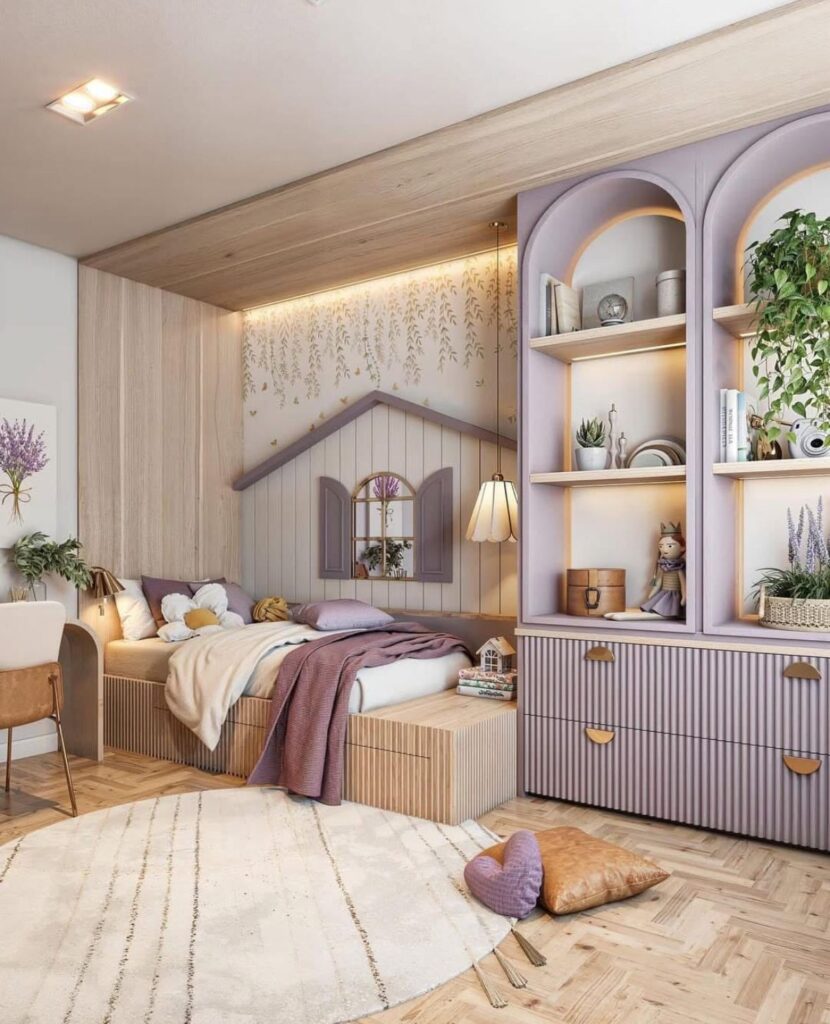
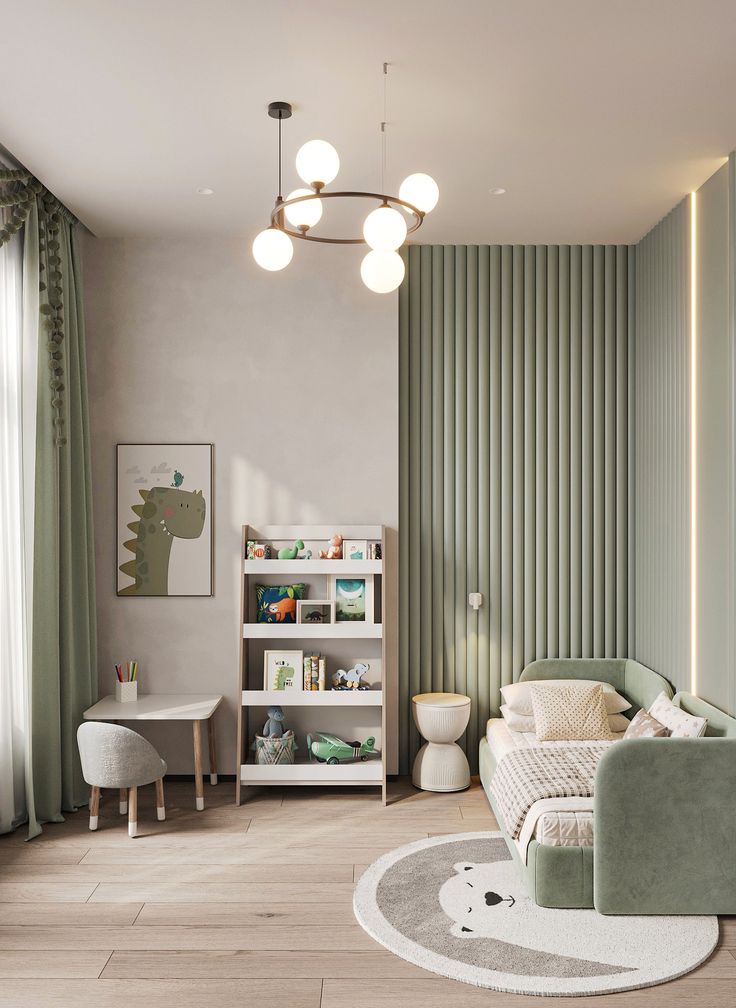
Adding Personality and Inspiring Creativity
A memorable children’s bedroom design blends fun with function by reflecting your child’s interests and encouraging their imagination. From themed spaces to cozy nooks, thoughtful choices help you create a room that supports play, learning, and personal expression.
Choosing Themes and Color Schemes
Selecting a theme sets the direction for your kids’ room. Popular themes include nature, space, animals, and favorite storybook characters. You can also choose a color palette that matches your child’s preferences, such as calming pastel tones or bold primary colors.
For inspiration, explore these common combinations:
| Theme | Main Colors | Key Features |
|---|---|---|
| Outer Space | Dark blue, silver | Glow-in-the-dark stars, planet wall decals |
| Nature | Green, brown, beige | Leaf motifs, wooden furniture |
| Under the Sea | Aqua, sandy beige | Fish art, bubble patterns |
When choosing colors, keep in mind how they affect mood. Blues and greens offer calm, while yellows and oranges add energy. Involve your child in this process to ensure the results reflect their personal interests and create a space that feels uniquely theirs.
Personalized Decor and Artwork
Adding personal touches with custom decor can make your child’s room feel special. Use items like name plaques, monogrammed bedding, or hand-painted murals tied to their favorite themes or hobbies. Create a gallery wall with their own masterpieces, framed drawings, or photographs.
Consider hanging a corkboard or pinboard for art, awards, or collections. This flexible display keeps the decor current and encourages your child to contribute to their environment.
Decor ideas:
- String lights with clips for rotating artwork
- Shelves displaying favorite toys or collections
- DIY crafts made together
Personalized decor creates a sense of ownership and pride, inspiring more creativity as your child grows.
Designing a Cozy Reading Nook
A dedicated reading nook encourages quiet play and supports your child’s learning. Choose a quiet corner or unused alcove in the children’s bedroom. Add a small bookshelf stocked with age-appropriate books, a plush chair or bean bag, and soft lighting such as a reading lamp or fairy lights.
Consider layering rugs, cushions, or blankets for extra comfort. Use pillows in fun shapes or themed fabrics to match the room’s overall design. If space allows, hang a fabric canopy or tent to define the area and add a sense of adventure.
Arrange the reading nook so books and materials are within easy reach. This setup helps foster independent reading habits and gives your child a calm space to unwind whenever they need it.
- 114shares
- Facebook0
- Pinterest111
- Twitter3
- Reddit0









